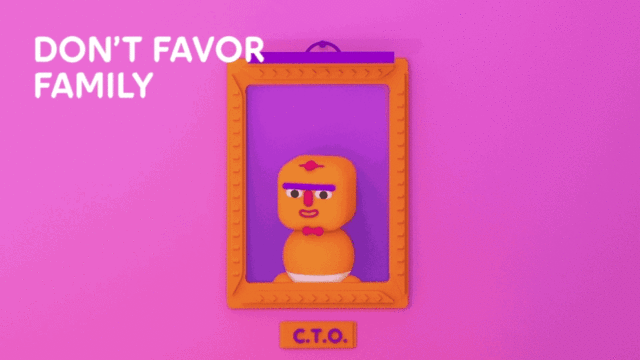Playing by the rules is fun. Really.
When your employer hired you, chances are HR handed over a code of conduct, told you to read it, and asked you to affirm that you do in fact understand the rules and ethics of the company. It's equally likely that you didn't read it. (Shame on you!) As the branding firm Wolff Olins sees it, reading and actually retaining the information is no more than a design challenge waiting to be solved.
Telia, a Swedish telecommunications company, recently revised its code of conduct—and to make sure its employees play by the rules, it enlisted Wolff Olins to devise a design-led solution in the form of a punchy website, an online game, and posters that clearly and concisely communicate right from wrong.

Telia is grappling with a number of ethical issues relating to its business practices, and the company is actively trying to clean up its act by revising its policies. For example, it's facing $1.4 billion in corruption-related fines and is under scrutiny for blocking internet service to customers in Turkey at the request of the Turkish government.
When Telia originally presented Wolff Olins with its corporate social responsibility report, it made a straightforward request to redesign the document—but Wolff Olins ran with it.
"Telia had been in trouble with ethical compliance in the past, so this project was important," Campbell Butler, design director at Wolff Olins, says. "They really wanted to have all their employees engage and understand responsible business conduct. If you want to engage with 25K employees, what's the best way to do it? We thought, this report is going to land on their desks, it'll look nice and neat, but no one is going to read it."

Wolff Olins realized it would have to play the role of translator to find a way to make a dry document feel exciting. First, it sussed out the key points, and then asked its in-house copywriter to rewrite the text and parse it in a way that readers would easily understand. That meant stripping it of confusing corporate jargon and rephrasing the code of conduct as 17 points on what not to do: Don't accept bribes, don't meet public officials alone, don't violate customers' privacy, etc. Then it was about drilling down deeper with hypothetical gray-area scenarios and instructing employees on how to do the right thing.
While the text is informative, the meat of the campaign lies in the artwork. Wolff Olins decided that depicting each of the 17 commandments in comical GIFs—perfect for short attention spans—would do the trick. Working with illustrator Julian Glander, they created a visual language of cartoonish characters acting out each of the rules. For example, "Don't endanger yourself or others" was shown through someone tripping over a phone charger cord left on a stairwell. "Don't post without thinking"—a nod to social media etiquette—involves someone posting something and turning beet red in embarrassment.
"Each had to be funny—you have to laugh at it," Butler says. "It's a balancing act. You have to be sensitive to make sure it was funny and bizarre and crazy enough, but also that it wasn't offensive and confusing."

One of the challenges with this project was finding a way to communicate to all 21,000 of Telia's employees, which are based in 14 different countries. "We had to find a nice balance of what's funny generally, which is contradictory because humor is about being pointed, not broad," Calle Enström, a designer at Wolff Olins, says.
The designers also gamified the code of conduct to make it more interactive. The directive not to share sensitive information was turned into a game in which players have to click on open laptops in plain view of prying eyes to close them. It hammers home the point that they need to be constantly aware of situations where data might be compromised.

While Wolff Olins created the project for a specific company and a specific code of conduct, some of the rules are universal in the business world—and it could serve as a road map, written in plain English, that anyone with a third-grade leading level could understand. None of us reads terms and conditions, and tech companies have even stopped pretending that we do. You don't even need to scroll down to the bottom of a user agreement to consent; there's a checkbox at the top of the page now in some cases. Dark patterns—deceptive UI/UX decisions—mean that companies can get away with questionable business practices at the expense of users.

More organizations should try to make their terms easier to understand through clear guidelines. That includes the Trump Administration, which is increasingly brazen in its offenses and cavalier about its attitude when it comes to ethical dealings. Don't accept gifts. (This applies to foreign diplomats staying at Trump properties.) Don't favor family. (Jared Kushner being son-in-law to #45 certainly counts.) Don't launder money. (Where are those tax returns?) Don't be a bully. (Taking jabs at someone's physical ability is included.) Don't post to social media without thinking. (Yes, we're still talking to you, Trump.)
Accountability is up to us; reacquainting ourselves with ethical practices is a good place to start. It's also up to designers to explain and communicate these points in a way that people actually absorb. Telia's ethical list is by no means exhaustive, and it's still just one company's point of view, but many of the takeaways are universally applicable. Visit dontdothisatwork.teliacompany.com to read the full list.